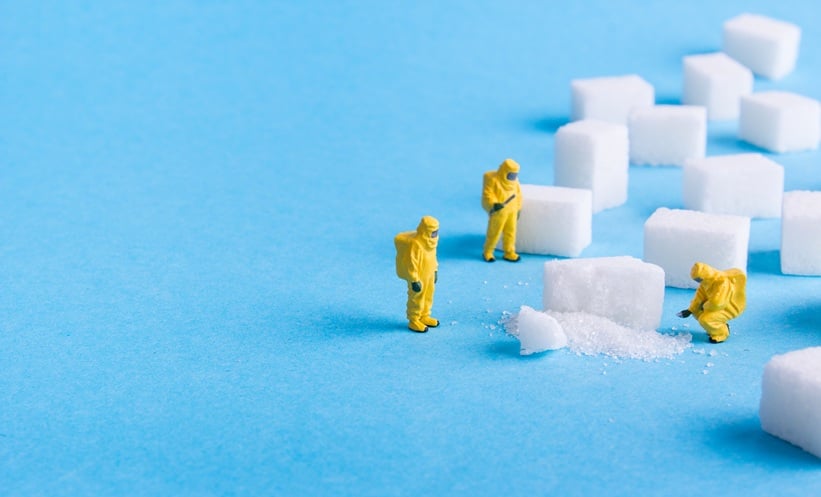Heeral Patel | Editorial Assistant![]()
During the 2022 Zoom Forward congress, experts in obesity, endocrinology, and paediatrics discussed how the COVID-19 pandemic aggravated the obesity crisis in children.
COVID-19 turned healthcare upside down in March 2020, and its effects have continued to ripple through society ever since. From an increased demand for ventilators to the urgent shift towards telemedicine, doctors have had to deal with the unpredictable aftermath of the global pandemic in many areas of their profession. As part of this year’s Zoom Forward congress, speakers discussed the impact COVID-19 has had on their patients with obesity, and how the chaotic waves of lockdown impacted the quality of life of children with obesity.
Ozair Abawi, Obesity Center CGG, Erasmus MC, University Medical Center Rotterdam, the Netherlands, shared his observations on the acute impact of COVID-19 lockdown measures on the lifestyle and behaviours of children with severe obesity. The Obesity Center CGG conducted a qualitative study involving 83 participants with severe obesity with a mean age of 11 years. The study involved a mixture of telephone interviews and questionnaires, which measured quality of life and eating habits.
Abawi revealed their research found no statistically significant changes in eating behaviours between the pre-pandemic period and during lockdown. However, there was an increase in emotional eating identified in older children and children with pre-existing psychosocial problems. In addition, there was an increased demand for food in many patients, arguably due to a loss of daily routine and perceived stress. This was especially apparent during the first wave of the pandemic.
Further, the researchers analysed the effect of COVID-19 on the physical activity of patients with severe obesity. Results showed that there was a significant decrease in weekly physical activity, with over half of patients (51%) doing less than 2 hours of physical activity per week. Moreover, anxiety related to COVID-19 was also associated with a reduced level of physical activity. Abawi stressed the importance of healthcare professionals being able to identify children who may be more vulnerable due to psychological factors.
Considering these observations, Abawi emphasised how pre-existing conditions in patients with obesity were more aggravated during the lockdown, and how certain groups of patients (i.e., those from a low socio-economic background) should be supported better in the future by providing more support, including frequent consultations during lockdowns.
Another expert in paediatric obesity, Judith Lubrecht, Department of Paediatrics, Maastricht University Medical Centre, Maastricht, the Netherlands, also reflected on lessons learnt from the COVID-19 pandemic. The medical centre conducted a national online survey to investigate the effect of COVID-19 on children with obesity. The study included children from the ages of 4 years to 18 years, and covered topics such as diet, sleeping patterns, parenting, and quality of life.
Data showed that 34% of patients reported eating more unhealthy snacks, 17% drank more sugary drinks, and 17% changed their diet. Alarmingly, the number of children drinking more than six glasses of soda a day doubled during the pandemic. The reason provided for changes in diet varied from boredom to stress.
Other findings indicated that 43% of children went to sleep later, 53% woke up later, and 55% slept for longer hours. Finally, a significant decrease of 75% in physical activity was observed. Interestingly, one positive discovery revealed that children were more likely to play outdoors during the pandemic due to home-schooling. Key take-home messages from Abawi and Lubrecht consisted of awareness of how the lockdowns impacted the structure of daily routine, physical activity, and eating behaviours.
Now that the impact of COVID-19 on obesity in children has been explored, it is important to consider approaches that could help care for these patients.
Bibian van der Voorn, Department of Paediatric Endocrinology, VU University Medical Center, Amsterdam, the Netherlands, and Edgar van Mil, Department of Paediatrics, Jeroen Bosch Medical Centre, Hertogenbosch, the Netherlands, discussed the ‘Dutch approach’ for addressing obesity in children. van der Voorn shared her experiences in treating obesity, personalised diagnostics, and treatment within integrated care for children with obesity.
van der Voorn explained that obesity is an extraordinarily complex condition and varies from individual to individual. This condition in children can arise due to several factors, such as slow metabolism, mental health problems, lifestyle choices, school environment, and endocrinological regulation of energy. van der Voorn’s experience is that obesity is mainly driven by behaviour; however, other biomedical factors are still important to measure in order to gain a complete picture of the disease. Therefore, conducting questionnaires that are multifactorial can help design the intervention strategy for the patient.
van der Voorn shared a case study from her obesity centre, where she put this tailored intervention strategy into practice. A 15-year-old girl with obesity presented to the clinic due to struggling with dieting and having severe fatigue, which affected her school attendance. She also suffered from depression and low self-esteem. Family history showed that her mother also suffered from obesity, and was treated by undergoing bariatric surgery at 35 years of age. In addition, her sister also had weight issues. Biomedical and physical examinations revealed the patient had comorbidities such as hypertension and dyspnoea. Interestingly, despite her mother and sister having weight problems, the genetic results showed no sign of genetic obesity. Finally, examination of psychosocial and lifestyle factors found that the child suffered from severe sleeping problems and had a low score on emotional functioning. Alongside a discussion with her parents, the course of treatment for this patient included therapy to address the low mood and sleeping issues.
Depression and obesity have a strong link, and the diseases concomitantly exist. Having depression can increase the risk of obesity, and vice versa, because these conditions share biological mechanisms. van der Voorn established that it is important to consider treating these psychological symptoms in patients with obesity, and explained that she is in favour of integrated care to target childhood obesity. In her concluding remarks, van der Voorn stated: “Teamwork is needed to help patients with obesity.”
In line with van der Voorn’s presentation, van Mil shared the importance of a broad assessment and using a multidisciplinary team of dieticians, endocrinologists, psychologists, and other healthcare professionals to improve the management of patients with obesity. van Mil compared the aetiology of obesity to the tip of an iceberg, illustrating that there is a lot more underneath the surface that needs to be considered when thinking about treatment. van Mil also emphasised the importance of acknowledging family involvement in the condition (i.e., feeding times, busy parenting schedules), and advised the audience not to avoid asking tough questions around topics such as child abuse.
Overall, this year’s Zoom Forward congress offered highly informative content on childhood obesity. Factors that are occasionally overlooked, such as depression, could have a substantial impact on the development of obesity, particularly during the COVID-19 pandemic lockdowns. Awareness of this aggravation can help healthcare professionals improve their care for patients with obesity in the future.








